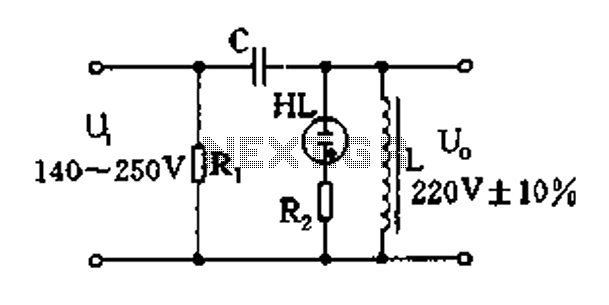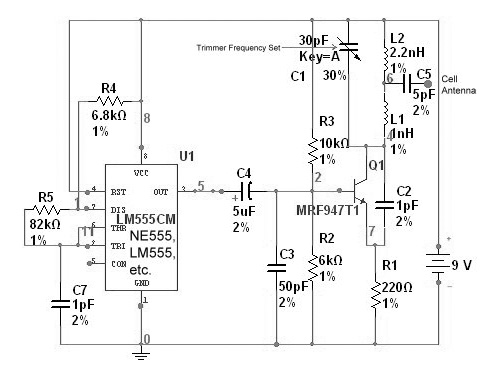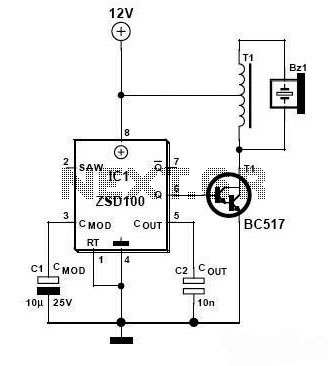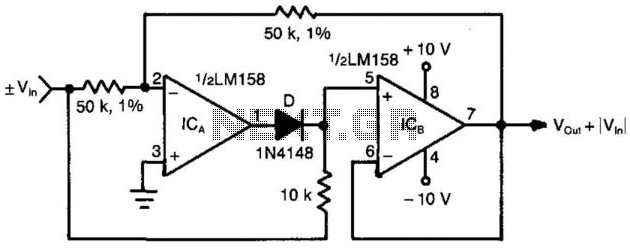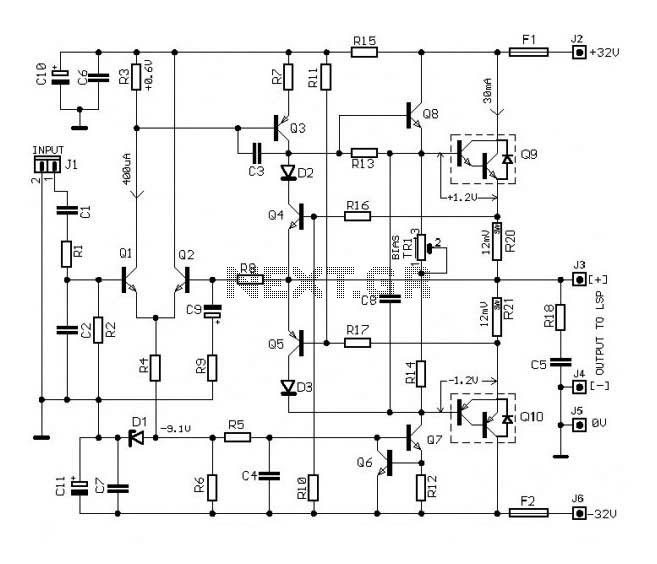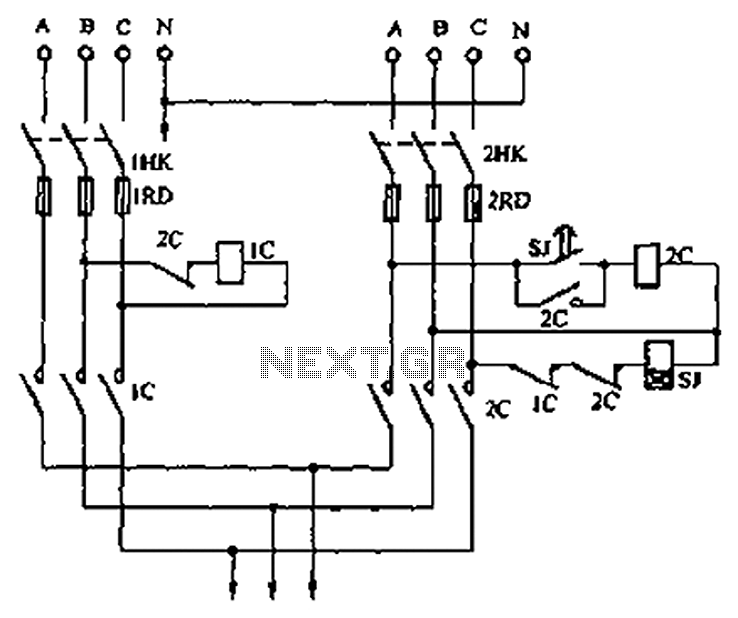
Intercommunication (Intercom) circuit
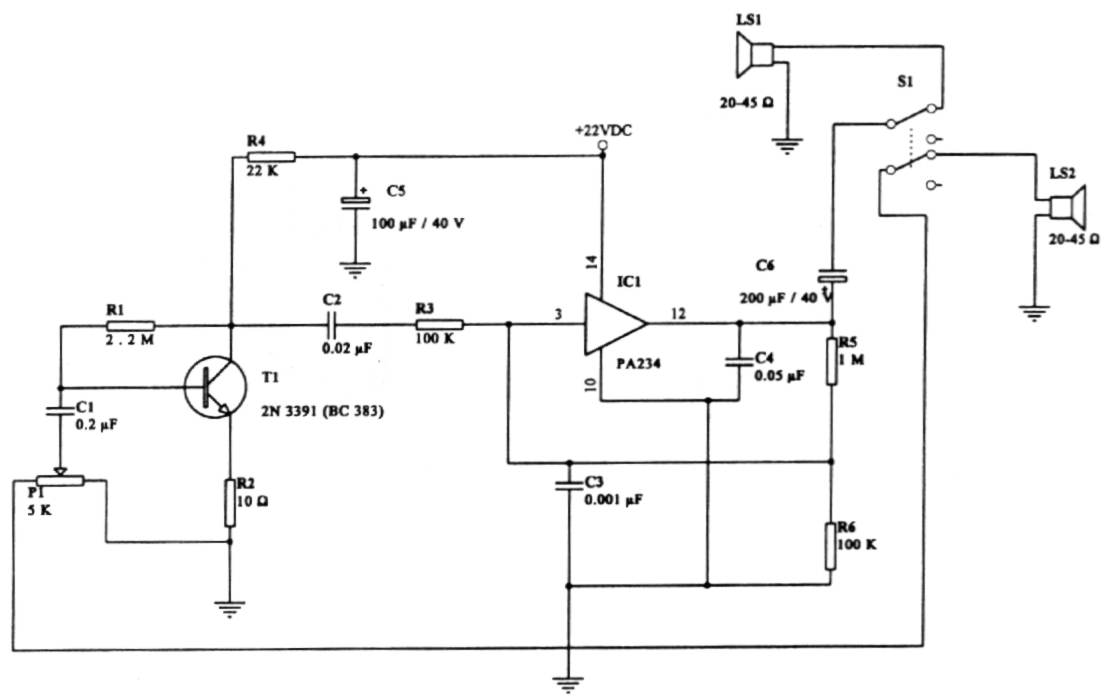
This intercom circuit is versatile and can be utilized in various applications. It operates at 22V, although it may function at a lower voltage (experimental testing is suggested). The circuit utilizes a loudspeaker with an impedance of 20-45 Ohms on each side for input and output.
The intercom circuit is designed to facilitate two-way audio communication, making it suitable for applications such as home intercom systems, office communication, and security systems. The circuit's operation at 22V ensures adequate power for audio transmission, providing clear sound quality. However, the possibility of operation at lower voltages allows for flexibility in different environments, accommodating various power supply constraints.
The use of loudspeakers with an impedance range of 20-45 Ohms is critical, as it influences the audio output quality and the overall efficiency of the circuit. When selecting loudspeakers, it is essential to ensure they fall within this impedance range to maintain optimal performance. The loudspeakers serve as both the input and output devices, allowing users to hear incoming audio and transmit their own voice effectively.
In terms of circuit design, it is advisable to incorporate a suitable amplifier to enhance audio signals, especially if longer cable runs are involved, which can introduce signal degradation. Additionally, a power supply circuit must be included to regulate the 22V input, ensuring that the intercom operates reliably without fluctuations that could affect audio clarity.
In summary, this intercom circuit is a robust solution for audio communication, adaptable to various voltage requirements and speaker configurations, making it a valuable addition to any electronic communication system.This is a great intercom circuit that can be used in many ways. It uses 22V to operate and maybe it will work at a lower voltage (you can try it). For input/output it uses a loundspeaker (20-45 Ohm) on each side.. 🔗 External reference
The intercom circuit is designed to facilitate two-way audio communication, making it suitable for applications such as home intercom systems, office communication, and security systems. The circuit's operation at 22V ensures adequate power for audio transmission, providing clear sound quality. However, the possibility of operation at lower voltages allows for flexibility in different environments, accommodating various power supply constraints.
The use of loudspeakers with an impedance range of 20-45 Ohms is critical, as it influences the audio output quality and the overall efficiency of the circuit. When selecting loudspeakers, it is essential to ensure they fall within this impedance range to maintain optimal performance. The loudspeakers serve as both the input and output devices, allowing users to hear incoming audio and transmit their own voice effectively.
In terms of circuit design, it is advisable to incorporate a suitable amplifier to enhance audio signals, especially if longer cable runs are involved, which can introduce signal degradation. Additionally, a power supply circuit must be included to regulate the 22V input, ensuring that the intercom operates reliably without fluctuations that could affect audio clarity.
In summary, this intercom circuit is a robust solution for audio communication, adaptable to various voltage requirements and speaker configurations, making it a valuable addition to any electronic communication system.This is a great intercom circuit that can be used in many ways. It uses 22V to operate and maybe it will work at a lower voltage (you can try it). For input/output it uses a loundspeaker (20-45 Ohm) on each side.. 🔗 External reference
